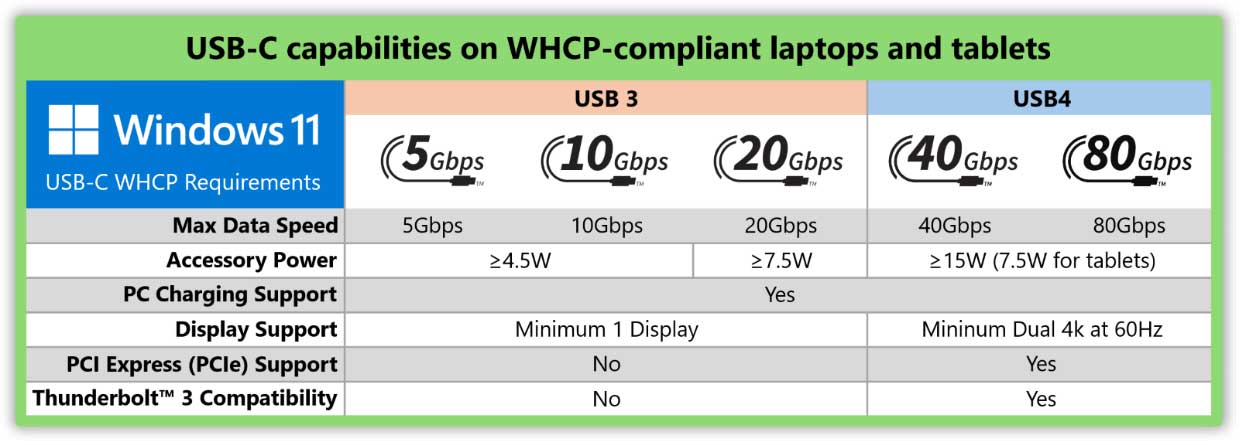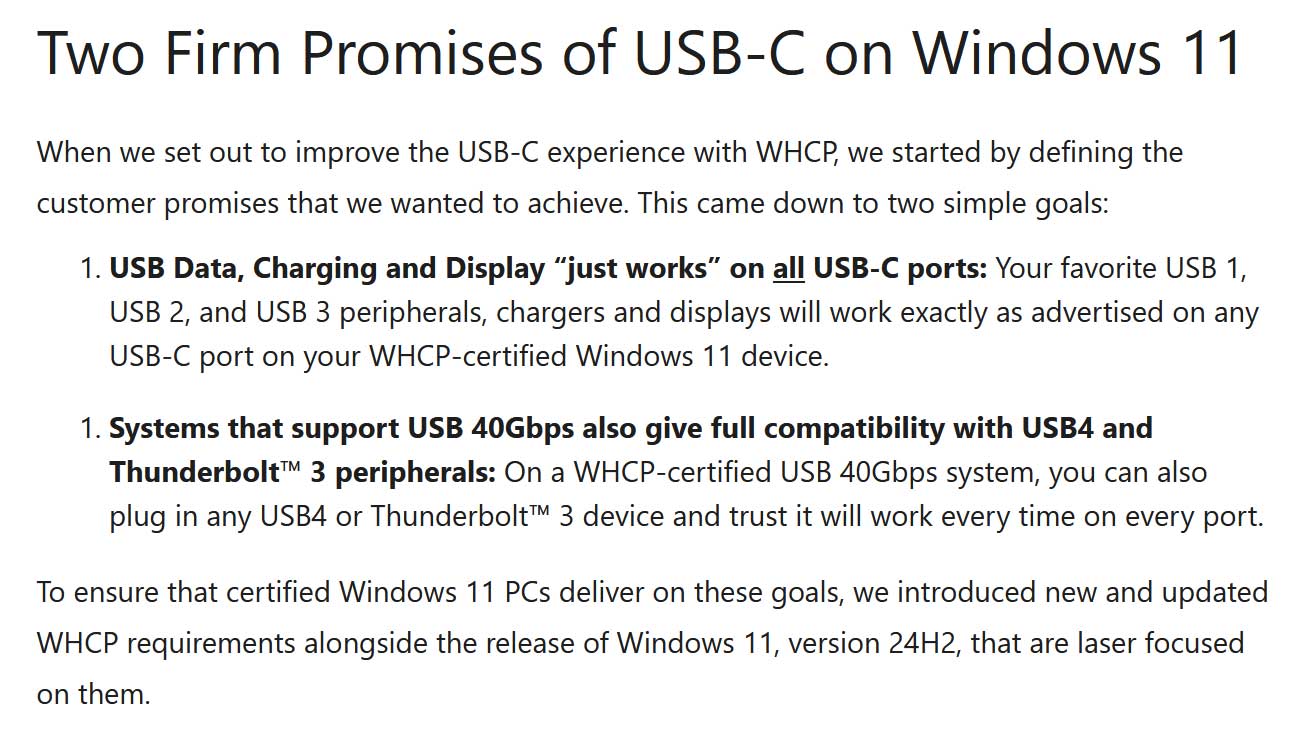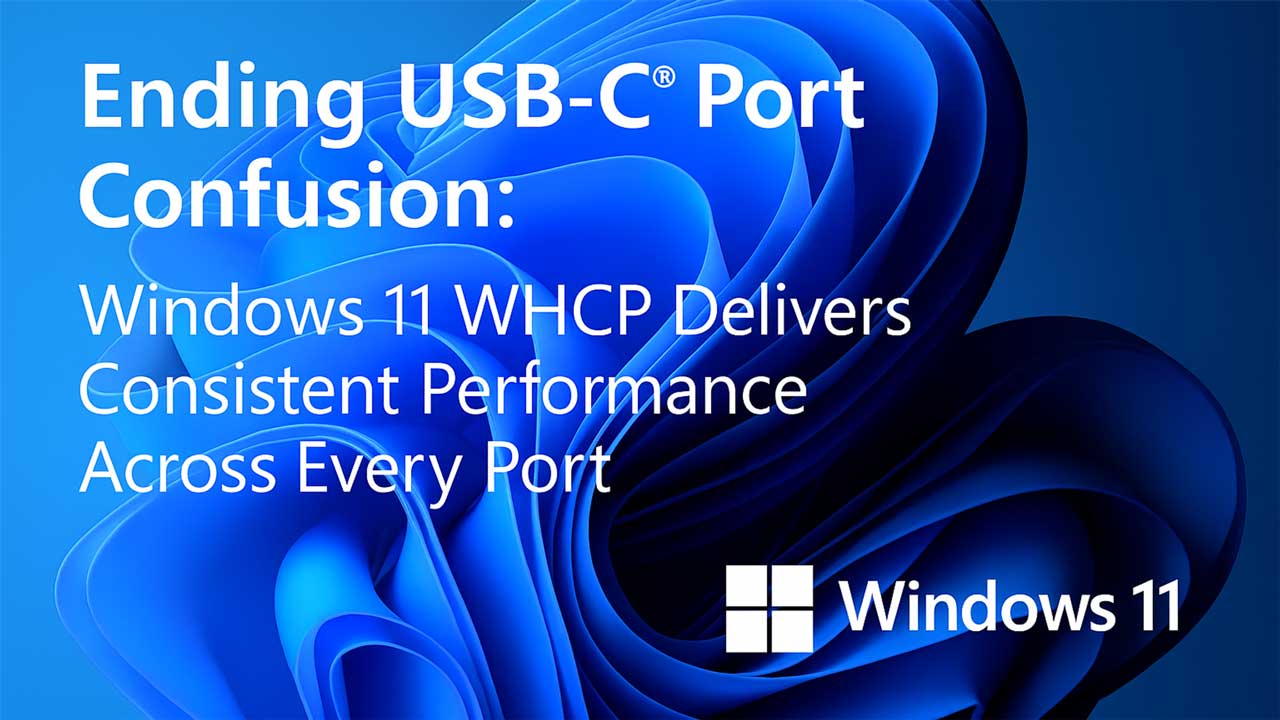Microsoft promises it is 'ending USB-C port confusion' with updated Windows 11 certified program
All USB-C ports need to support data, charging, and display functionality.

Microsoft promises it is “ending USB-C port confusion” with its updated Windows 11 Windows Hardware Compatibility Program (WHCP) initiative. Going forward, it pledges to ensure all USB data, charging, and display functionality “just works” on all your USB-C ports. Moreover, an additional rule means USB 40Gbps ports will be fully compatible with both USB4 and Thunderbolt 3 peripherals. The Microsoft blog indicates that these rules should already be in place with certified Windows 11 laptops and tablets that come with Windows 11 24H2 installed.
Senior Product Manager at Microsoft, Ugan S., asks readers of his blog whether they are “Tired of USB-C ports that don’t behave consistently?” To illustrate the problem, he retells a story about ‘The Blank Display’ and laments that such issues still happen in the present day. It isn’t the USB-C port that’s the problem, says the Microsoft exec, it is “the inconsistent implementations of USB-C port capabilities across the PC ecosystem.” Or in other words, not all USB-C ports are created equal.
To fix this inconsistency, the WHCP will now mandate that every USB-C port on new Windows laptops and tablets needs to support data, charging, and display functionality. This should mean no more guessing about which ports support what, and might also mean end users are happier as they can connect a charger or second display to either side of a laptop (if there are USB-C ports both side).



Microsoft put the chart above together to show the capabilities of WHCP-compliant laptops. Yes, they all support the three core functions, but their levels of support will still vary. In addition to the familiar data speed differences, USB 3.X ports won’t provide as much accessory power, or support as many displays, as USB4.
On the topic of USB4, you can also see in the table that “On a WHCP-certified USB 40Gbps system, you can also plug in any USB4 or Thunderbolt 3 device and trust it will work every time on every port.”
Not mentioned yet, or hinted at in the table, Microsoft is also requiring USB-IF certified silicon in the PC. Moreover, a new Microsoft driver stack requirement means PCs are validated using Microsoft’s built-in USB controller drivers. This should ensure security and feature updates arrive via Windows Update.
To wrap up its post, Microsoft explains that the Hardware Lab Kit (HLK) is behind these improvements. The process is ongoing, with WHCP updating with every Windows release, delivering fixes and enhancements.
Get Tom's Hardware's best news and in-depth reviews, straight to your inbox.
Follow Tom's Hardware on Google News to get our up-to-date news, analysis, and reviews in your feeds. Make sure to click the Follow button.

Mark Tyson is a news editor at Tom's Hardware. He enjoys covering the full breadth of PC tech; from business and semiconductor design to products approaching the edge of reason.
-
Exploding PSU Hopefully it won't be a..Reply
"We have 10 different standards! Let's make one standard to rule them all!"
"We now have 11 different standards!"
... kind of situation. -
Findecanor Small nit-pick: The article doesn't mention this but the blog post specifies that by "Display" Microsoft means DisplayPort alternate mode.Reply
It does not include HDMI alt mode or MHL alt mode over USB-C. -
usertests This is unexpected and promising.Reply
I wonder if it will be followed even for low-end devices like Wildcat Lake, that may not have much I/O to spare. I guess so, since even the 5 Gbps ports can technically support a display.
I thought that HDMI alt mode was unused and dead:Findecanor said:It does not include HDMI alt mode or MHL alt mode over USB-C.
https://arstechnica.com/gadgets/2023/01/hdmi-to-usb-c-spec-axed-as-displayport-alt-mode-reigns-supreme/ -
Alvar "Miles" Udell https://cdn.mos.cms.futurecdn.net/saGugb9bgyde7skk5ci8kH-1200-80.jpg.webpReply
But they won't mandate USB-C ports be USB4-40gbps or greater, so the "confusion" I predict will only increase as manufacturers cut costs from having to support charging on any port. -
thisisaname Reply
There is even a XKCD for this.Exploding PSU said:Hopefully it won't be a..
"We have 10 different standards! Let's make one standard to rule them all!"
"We now have 11 different standards!"
... kind of situation.
https://imgs.xkcd.com/comics/standards_2x.png -
jlake3 This sounds great, in theory, but my understanding is that routing every function to every port raises the complexity of motherboard design and increases cost to a level where it just doesn't make sense to put two "do everything" type-C ports on each side of a low-end machine, even if buyers say they want the flexibility.Reply
I feel like the maliciously-compliant OEM approach to this would be to just provide less type-C ports, and/or choose to leave USB4 out of machines that would otherwise get one "better" port in order to avoid triggering the requirement that they bring every type-C port up to being a Thunderbolt 3 compatible USB4 port. Last I checked, 4 ports all supporting Thunderbolt 3 was still something you only got on pretty expensive machines. -
teeejay94 Any new desktop or laptop made after 2025 should be required to come with USB4 and all its functionality, 80Gbps etc etc. This is another indication that new technology is only for rich people and the rest of us will enjoy it in 5-10 years when they finally start standardizing it and by then USB6 will be outReply -
lduguay Ok one port does it all. But what about cables? One couldn't fish a random USB-C cable from the bottom of the drawer and think it will work at 80Gbps with 240W power delivery? No it will still fail.Reply -
AkroZ Reply
Only Intel produce Thunderbolt chips and theu are a little costly. The main issue is that Thunderbolt give access to all hardware including ram, the chip intend for the CPU to manage security access. Intel CPU have a fully compatible security module, but AMD have there own security module which Intel chip isn't compatible.jlake3 said:This sounds great, in theory, but my understanding is that routing every function to every port raises the complexity of motherboard design and increases cost to a level where it just doesn't make sense to put two "do everything" type-C ports on each side of a low-end machine, even if buyers say they want the flexibility.
I feel like the maliciously-compliant OEM approach to this would be to just provide less type-C ports, and/or choose to leave USB4 out of machines that would otherwise get one "better" port in order to avoid triggering the requirement that they bring every type-C port up to being a Thunderbolt 3 compatible USB4 port. Last I checked, 4 ports all supporting Thunderbolt 3 was still something you only got on pretty expensive machines.
The motherboard manufacturer need to make a bridge to AMD cpu security module for the hardware to make it secure.
Only Asrock and Gigabyte have made motherboards for AMD cpu with Thunderbolt in 2020 but stopped when security concerns were raised if any USB device plugged can access all hardware (including memory) without restriction. -
baboma >I feel like the maliciously-compliant OEM approach to this would be to just provide less type-C ports, and/or choose to leave USB4 out of machines that would otherwise get one "better" portReply
The number & type (speed) of USB-C port is a marketing upsell, ie higher-tier products get more/faster ports. The MS mandate doesn't change this equation.
The new MS standard doesn't change that much. USB4 is based on TB3 and compatibility is already required, just not every TB3 feature is supported on some (cheaper) implementations, eg PCIe tunneling. Now it will be.
The only major changes are video-out (DP Alt) will work on USB3, and full TB3 compat on USB4. The mandate doesn't change charging & data speed; it just standardizes them.
Sleep/wake functionality is IMO a bigger deal than most realize. Good to see it's included in the mandate.
Lastly, OEMs don't need to comply with the MS mandate. Those w/o compliance just won't get WHCP cert, and can't be marketed as "Certified for Windows." It doesn't mean Windows can't run on those devices. I imagine all mainstream OEMs will comply, but lower-tier white-label boxes may forgo the cert.
>Ok one port does it all. But what about cables? One couldn't fish a random USB-C cable from the bottom of the drawer and think it will work at 80Gbps with 240W power delivery? No it will still fail.
Yep, cable confusion is outside the scope of the mandate. IMO, it's a user responsibility. I tag all my USB-C cables when I buy them to tell them apart. By default, any unlabeled cable is viewed as a charge-only, USB2-data part.